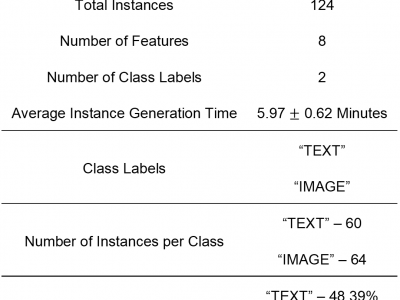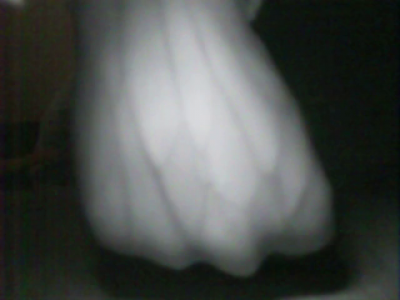Image Processing
Human intention is an internal, mental characterization for acquiring desired information. From
interactive interfaces, containing either textual or graphical information, intention to perceive desired
information is subjective and strongly connected with eye gaze. In this work, we determine such intention by
analyzing real-time eye gaze data with a low-cost regular webcam. We extracted unique features (e.g.,
Fixation Count, Eye Movement Ratio) from the eye gaze data of 31 participants to generate the dataset
- Categories:
 634 Views
634 ViewsThis dataset is composed by both real and sythetic images of power transmission lines, which can be fed to deep neural networks training and applied to line's inspection task. The images are divided into three distinct classes, representing power lines with different geometric properties. The real world acquired images were labeled as "circuito_real" (real circuit), while the synthetic ones were identified as "circuito_simples" (simple circuit) or "circuito_duplo" (double circuit). There are 348 total images for each class, 232 inteded for training and 116 aimed for validation/testing.
- Categories:
 3421 Views
3421 Views
this is a test
- Categories:
 323 Views
323 ViewsResearchers are becoming increasingly interested in dorsal hand vein biometrics because of their characteristics. These characteristics can be summarized as follows: it does not need contact with the capture device, cannot be forged, does not change over time, and provides high accuracy. Recognition systems of the dorsal hand rely on how the collected images captured from the device are good. Near-infrared (NIR) light is used to distinguish veins from the back of the hand.
- Categories:
 1282 Views
1282 ViewsThe FLoRI21 dataset provides ultra-widefield fluorescein angiography (UWF FA) images for the development and evaluation of retinal image registration algorithms. Images are included across five subjects. For each subject, there is one montage FA image that serves as the common reference image for registration and a set of two or more individual ("raw") FA images (taken over multiple clinic visits) that are target images for registration. Overall, these constitute 15 reference-target image pairs for image registration.
- Categories:
 1479 Views
1479 Views
These simulated live cell microscopy sequences were generated by the CytoPacq web service https://cbia.fi.muni.cz/simulator [R1]. The dataset is composed of 51 2D sequences and 41 3D sequences. The 2D sequences are divided into distinct 44 training and 7 test sets. The 3D sequences are divided into distinct 34 training and 7 test sets. Each sequence contains up to 200 frames.
- Categories:
 304 Views
304 ViewsThe dataset contains UAV imagery and fracture interpretation of rock outcrops acquired in Praia das Conchas, Cabo Frio, Rio de Janeiro, Brazil. Along with georeferenced .geotiff images, the dataset contains filtered 500 x 500 .png tiles containing only scenes with fracture data, along with .png binary masks for semantic segmentation and original georeferenced shapefile annotations. This data can be useful for segmentation and extraction of geological structures from UAV imagery, for evaluating computer vision methodologies or machine learning techniques.
- Categories:
 540 Views
540 Views
Datasets for image and video aesthetics
1. Video Dataset : 107 videos
This dataset has videos that can be framed into images.
Color contrast,Depth of Field[DoF],Rule of Third[RoT] attributes
that affect aesthetics can be extracted from the video datasets.
2.Slow videos and Fast videos can be assessed for motion
affecting aesthetics
- Categories:
 274 Views
274 ViewsPlease cite the following paper when using this dataset:
N. Thakur, "Twitter Big Data as a Resource for Exoskeleton Research: A Large-Scale Dataset of about 140,000 Tweets from 2017–2022 and 100 Research Questions", Journal of Analytics, Volume 1, Issue 2, 2022, pp. 72-97, DOI: https://doi.org/10.3390/analytics1020007
Abstract
- Categories:
 2561 Views
2561 Views
In recent years, many unmanned retail stores have been introduced with the development
of computer vision, sensors and wireless technology. However, the trend has slowed due to the costs
associated with implementation. A vision-based kiosk, which is only equipped with a vision sensor, can
be a compact and affordable option. The vision-based kiosk detects a product via CNN-based object
detectors and performs instance-level classification by aggregating detections from multiple cameras.
- Categories:
 513 Views
513 Views




